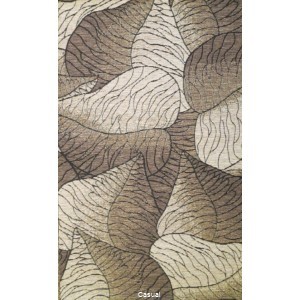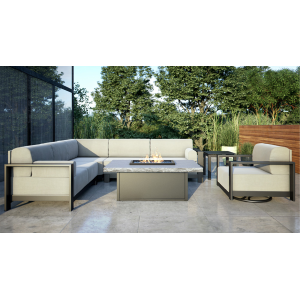Accessories
Time travel: a concept inconceivable to us mere mortals, yet the history of outdoor furniture transcends time, jumping from decade to decade to tell a riveting story. From the origins of the humble garden bench to the development of modular patio furniture and beyond, it’s an exploratory journey which has seen each step building upon the foundations of the last.
To delve into this journey through time is to find a fascinating story of innovation, design, and style. From the boom of wrought iron furniture in the late 1800s to the application of the latest eco-friendly materials in modern furniture, there’s so much to discover in the history of outdoor furniture.
In this article, we’ll cover the milestones of the past, the present-day trends, and the probable technological advancements of the future; something that was unthinkable to our ancestors. So, let’s hop into the DeLorean and kick off our journey!
Ancient Times: Origins of Outdoor Furniture
Ancient times witnessed some of the earliest forms of outdoor furniture, from the comfortable Iron Age gardens of Europe to the functional seating and tables crafted in Ancient Greece. These furnishings were meant to provide comfort outdoors, with many cultures having various unique craftsmanship methods and ornate designs.
One of the earliest pieces of outdoor furniture discovered was a bronze seat believed to have been used by Celtic warriors around 1000 BC. This seat was found buried in a grave along with other everyday items, indicating its use as an outdoor chair, stool, or ottoman. Similarly, surviving woodworking tools and pottery shards suggest that ancient Greeks had knowledge of outdoor furniture crafting techniques. Evidence suggests these early wooden seats, known as klite (“beds”), were made with both comfort and security in mind — featuring comfortable cushioning material, curved armrests, and thick legs to support large weights.
In addition to large chairs and small stools, archaeologists have also discovered long benches in some Ancient Greek cities, suggesting they may have also been used for conversation or lounging rather than strictly utilitarian purposes. Another commonly found piece of outdoor furniture from this time period is the triclinium — an ornately bowed couch made from cast iron. While not widely popularized until Roman times, this style of seating can be traced back to Ancient Greece, when it appears to have been used for events such as symposia and banquets.
Despite these important contributions to outdoor furniture history, Ancient Greece does not feature as prominently in the archaeological record as other contemporary cultures such as Egypt or Mesopotamia. Likewise, very few artifacts remain from the Iron Age that preceded it. Evidence from both geographical regions shows that many ancient peoples valued comfort and ornate design — qualities that still define much of today’s modern outdoor furniture.
Seating and Furniture in Ancient Egypt

Ancient Egyptians are credited as having created some of the earliest forms of seating and furniture. Throughout their long history, both indoors and outdoors in the temple courtyards, chairs served as important symbols for wealth and power, with ornately carved seating and tables a necessity in any home or palace.
While the average Egyptian family may not have had access to such elaborate decorations, less complex versions would still have been used for daily activities. Early examples of chairs were found at places like Hierakonpolis in southern Egypt, dating from 3500 BCE and constructed from leather over a wooden frame. These simple leather chairs were likely common for everyday use.
Material used for furniture also became an increasingly important symbol of status among wealthy Egyptian families. Carved alabaster was used to make thrones and pieces of furniture found in tombs. In addition to precious metals, hieroglyphics decorated more elaborate items, while those carved out of limestone or mud-brick walls displayed geometric patterns with figures like birds and animals depicted upon them.
More expensive materials like ivory inlaid with gold and semi-precious gems such as lapis lazuli served as adornment on higher class furniture pieces and served as further indicators of wealth and social standing. These items were typically found in homes of dignitaries during the New Kingdom period (1530-1070 BCE) when Ancient Egypt was at its peak of power.
Egyptian artisans also developed woodworking skills to create functional and decorative furniture such as folding stools, beds, couches, etc., which were then draped with colorful floral fabrics. While some extremely ornate pieces existed during this time period, many other simpler objects were solely practical in purpose for use by everyone from royals to rural farmers alike.
Seating and furniture objects deeply rooted in symbolism were fundamental part of Ancient Egypt’s culture that has influenced design trends throughout the ages since then.
Outdoor Furniture in Ancient Greece
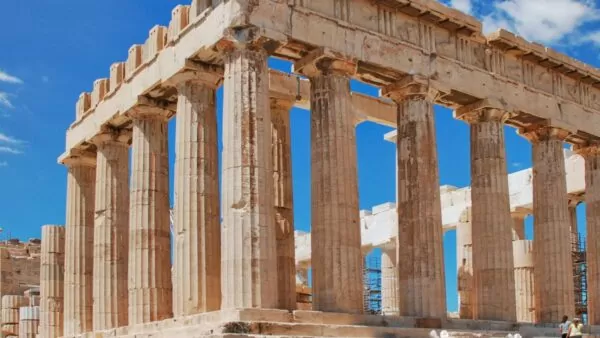
Outdoor furniture in Ancient Greece was minimalist in style and composed of several basic elements. Wooden benches, stools, and chairs were some of the earliest common forms of outdoor furniture in Greece. In addition to wood pieces, many Ancient Greek homes had clay tables and benches that were usually made from terracotta or marble.
The type of materials used for outdoor furniture depended largely on the region in which it was found, but most commonly gardens were decorated with practical, low-cost items like plain wooden benches, terra cotta flowerpots, and tall cypress trees that provided shade during hot summer days while also acting as privacy screens.
Archaeological evidence suggests that open-air courtyards and sleeping porches were quite popular during this period; many of these featured simple wooden trestle tables for eating and drinking. Many people also chose to use stone couches as seating arrangements within their patios and courtyards. These provided comfort with little effort to make or maintain them due to their durability over time.
Another debate surrounding outdoor furniture from Ancient Greece is whether or not mosaics were used as decoration on top of tables or other surfaces outside the home. Some archaeologists believe that mosaics represented a sign of luxury and wealth, while others suggest that wealthier citizens may have been able to afford products made out of more expensive materials such as stone or chests carved out of ivory.
Outdoor Furniture in Ancient Rome
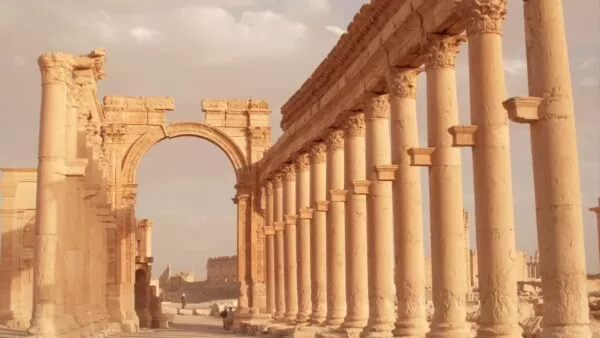
Outdoor furniture has been around for centuries, with its design and construction evolving over time. From Ancient Rome to the Middle Ages, outdoor furniture has been used to make life more comfortable in many different settings. This section takes an in-depth look at outdoor furniture in Ancient Rome, including the materials it was made of, its design features, and how it was used in everyday life.
The Romans were known for their architecture and engineering prowess and this is reflected in their outdoor furniture designs. Despite their limited resources at the time, they managed to create seats and tables that were both attractive and comfortable. Wood was a common material used in Roman outdoor furniture as it is strong, lightweight, and readily available. Tables were often finely crafted from marble or stone while chairs commonly featured intricate carvings on their legs and arms.
In terms of function, the Romans used their outdoor furniture to relax after a hard day’s work or entertain guests. Additionally, Roman dining tables were also used as a place to celebrate special occasions such as wedding anniversaries. Many of the designs for these pieces feature curved lines and smooth surfaces which add comfort and style to any gathering space.
While there is no doubt that Ancient Rome played a major role in developing our modern understanding of outdoor furniture, there are some historians who argue that Rome’s contribution was more minimal than previously thought. According to these scholars, much of what we currently consider “ancient” style originates from other cultures such as the Greeks or Egyptians who had already developed sophisticated furniture before the Romans ever arrived on the scene. Nevertheless, the majority view holds that Rome helped to refine early designs into something more aesthetically pleasing and comfortable for use outside of the home.
With its elegant design features, wide variety of materials used in construction, and numerous uses within everyday life, outdoor furniture from Ancient Rome continues to inspire contemporary designers today.
Medieval and Renaissance Outdoor Furniture

Outdoor furniture during the Medieval and Renaissance periods was heavily influenced by the wealthy class’ pursuit of comfort and beauty. During this time, elaborate carvings covered every possible surface, materials used were expensive and this design trend was so popular that one could argue it marked a radical shift in furniture making.
The use of stone and metal tables persisted in both private and public gardens, although there is documented evidence that supports the use of wood for outdoor furniture as well. Materials such as velvet, gilt wood, pewter and leather were also used to add to the comfort as well as ornamentations such as shells, gems and precious metals incorporated into designs. In more extreme cases, expensive imported fabrics from Egypt, India or Persia would be used for crafting seats for chairs and benches.
The opulence associated with furniture at this period still captures the imagination of many to this day. Elaborate styling was prominent in all forms of outdoor furniture found during this period with designs often featuring twisting cabriole legs, luxurious materials and detailed carvings. The designs weren’t just intended to look pleasing they had a purposeful nature. Benches with attached tables provided a surface to eat on while dining outdoors while taller back rests offered more personal privacy while seated outdoors.
It is argued by some that this period in time offered an unrivaled level of craftsmanship which is further demonstrated with fine pieces like the French bench being collected by museums around the world. Others claim that little has changed in outdoor furniture since then and much of today’s outdoor furniture is similar to what was popular centuries ago which demonstrates its timeless appeal.
Drawing from inspiration from Medieval and Renaissance outdoor furniture designs, the next section will explore how outdoor furniture evolved from 18th century to the 20th century.
Outdoor Furniture from the 18th Century to the 20th Century
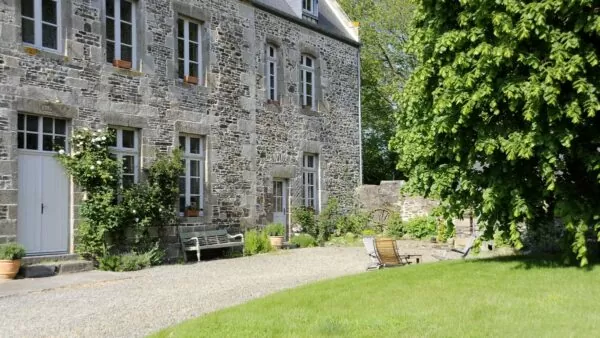
The evolution of outdoor furniture from the 18th century to the 20th century was marked by shifting styles, materials, and purposes. By the start of the 19th century in the West, garden furniture was becoming increasingly popular. Wrought iron, cast iron, and wood furniture was crafted for seating, tables, and other activities such as croquet. During the turn of the century until around World War I, whimsical shapes such as pagodas and elephants were common as well as designs that incorporated various elements of nature and curved lines mimicking organic growth. However, not all traditionalists embraced this new aesthetic; some argued that outdoor furniture should remain less ornate than its indoor counterpart in order to stay connected with nature.
By mid-century modernism began making its mark on outdoor furniture forms. Clean lines featured prominently combined with a new focus on functionality that emphasized expansive yet straightforward designs made from modern materials such as aluminum and vinyl wicker. Pieces from this era were designed to give greater comfort without sacrificing practicality or taking away from their surroundings. Further advances in production techniques enabled patio sets to become both weatherproof and cost effective for consumers which helped propagate the popularity of outdoor furniture into the 20th century.
As we move forward into the 21st century, outdoor furniture is following suit with its indoor counterpart by including more creative designs that prioritize comfort and style over just being utilitarian. The evolution of outdoor furniture materials has been an integral part of this transition, allowing us to craft more intricate pieces while retaining their durability against extreme weather conditions.
The Evolution of Outdoor Furniture Materials
The evolution of outdoor furniture materials has undergone a dramatic transformation over the years. From the early days of patio furniture crafted from natural materials like wood and stone to newer trends such as composite lumber, aluminum, and all-weather fabrics, there are now a variety of options available to suit any taste or budget.
Wood remains one of the most popular materials for outdoor patio furniture as it is naturally durable and attractive. While teak and cedar are among the most preferred choices due to their superior strength, other types such as redwood or maple can also provide excellent sturdiness and aesthetic value. However, many consumers choose composite lumber instead for its affordability and easy maintenance. Resin wicker and wrought iron have also become popular selections in recent years, allowing homeowners to enjoy a stylish yet more affordable product.
Moreover, advances in technology have seen the emergence of high-end materials such as aluminum, stainless steel, and synthetic wicker which offer durability without compromising on style. All-weather fabrics such as acrylic canvas are often chosen by those seeking more flexibility and breathability during hot seasons.
With such a wide range of materials available today, it is clear that the market for backyard furniture has grown significantly larger than ever before. While some may disagree about which material is best in terms of longevity or comfort level, both sides can probably agree that this amazing selection helps make decorating patios and gardens easier than ever before.
Early 20th Century Outdoor Furniture Designers
The early 20th century saw the rise of a number of outdoor furniture designers who made their mark by creating innovative and durable pieces that featured both practicality and style. Eliel Saarinen, a designer in the Art Nouveau style and partner at studio architecture firm Gruen, was one of the most notable and influential outdoor furniture designers during this period. His designs focused on combining functionality with form, and also incorporated elements of classical Scandinavian style, such as simple lines and natural colors.
Walter Gropius, an innovator in minimalistic design, also played a major role in the development of outdoor furniture during this time. His designs featuring aluminum frames and fabric slings quickly became popular across Europe. He currently serves as one of the godfathers of modernist outdoor furniture design.
There are those who argue that these designed lacked creativity or originality when compared to their 19th century predecessors, pointing out that many forgo lavish ornamentation for more simplistic forms and styles. On the other hand, many see these minimalist designs as invaluable contributions to outdoor furniture design due to their practicality and durability.
As trends in outdoor furniture continued to evolve through the early 20th century, it was clear that a new era in design had begun. Modern innovations coupled with traditional style resulted in timeless pieces that are still popular today
Trends in Outdoor Furniture through the 20th Century
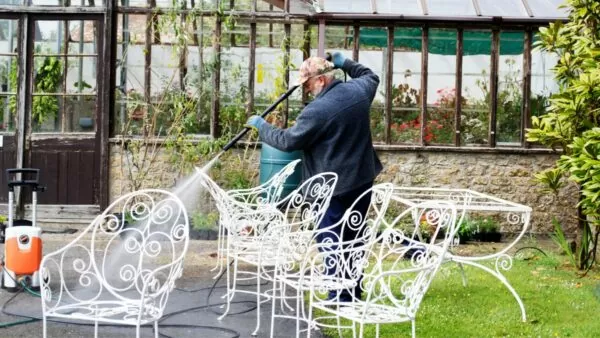
The 20th century brought about a number of changes to outdoor furniture design. During the early part of the 1900s, styles leaned towards traditional motifs, often featuring handcrafted wooden furniture with intricate details. As time went on and new materials became available in the market, industrialization impacted the designs, resulting in cleaner lines and simpler shapes. Popular materials during this period included wrought iron and aluminum, as well as wicker.
Mid-century modern designs emerged during the 1950s, leveraging inexpensive materials like plastic and fiberglass while emphasizing comfort and practicality over ornate details. Natural elements were incorporated into the designs often through wood armrests, concrete accents, and other natural transformations. The overall look of the pieces aimed for timelessness rather than trendiness, often reflected through organic shapes like curves and circles. While muted colors were characteristic of this style, playful hues could also be found scattered around as accents.
Moving forward to the 21st century, outdoor furniture designers have pushed themselves even further with a more contemporary approach to outdoor design. Eco-friendly materials have gained traction due to their sustainable nature such as bamboo, corkwood and recycled plastic. Bold colors are combined with sleek shapes to create an eye-catching yet casual space. Outdoor sofas are the perfect example of how functional pieces can also look chic in any setting.
At the same time—and depending on personal preference—vintage inspired pieces remain popular when it comes to outdoor furniture design; upholstered seating with quilted cushions or retro chairs with bright fabric strips prove that history is here to stay when it comes to outfitting outdoor spaces.
With modern outdoor furniture now fully established as a trend in its own right, it’s clear that outdoor furniture has traversed a fascinating journey throughout the 20th century into modern day.
Modern Outdoor Furniture and Outdoor Designers
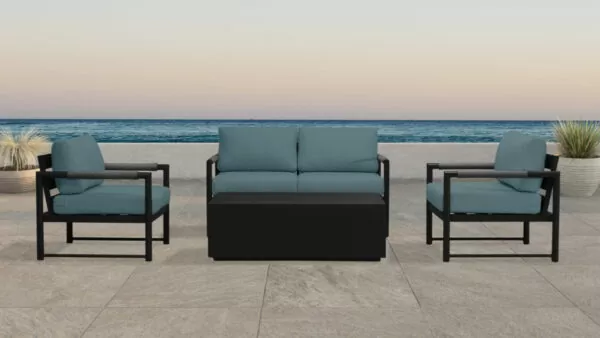
Modern outdoor furniture has been crafted for style and comfort since the mid-20th century. With the ultimate aim of enjoying the outdoors, manufacturers have crafted stylish furniture that is comfortable, long-lasting and aesthetically pleasing. The era of modern outdoor furniture saw a shift from traditional wooden chairs to stainless steel frames, fabrics that are fade and wear resistant, durable cushions and artificial rattan and wicker materials like resin or all-weather wicker.
Outdoor designers have played an important role in creating innovative pieces for both residential homes and commercial spaces. With their eye for design, they take an ideas-driven approach to create products that solve functional issues while retaining some sense of style and individuality. Many of today’s outdoor designs offer owners the ability to customize pieces to suit their specific needs. This often includes the use of sustainable materials such as bamboo or recycled plastic (composite lumber).
There is debate as to whether modern outdoor furniture detracts from nature or enhances it with its stylish and well-crafted designs. Some argue that when placed in nature, modern furniture can decrease appreciation and implementation of natural landscapes which may be more visually attractive than well designed furniture pieces. On the other hand, others argue that using modern outdoor furniture allows people to benefit from natural settings whilst enjoying their quality time from the comfort of accessible pieces.
Forecasting The Future Of Outdoor Furniture Design
Technology has played a central role in the development of outdoor furniture. From the earliest days of fabricating chairs and benches to the advent of mass-production, advances in technology have opened up many possibilities for designs and materials. Today, modern technologies such as 3D printing are allowing designers to create outdoor furniture that is both functional and stylish.
The use of plastics for outdoor furniture began after World War II, when new materials became available and were found to be durable enough for outdoor conditions. Synthetic fibers like polyester, polyurethane and acrylic fabrics are also used in outdoor furniture design, offering continued resistance to fading and weathering while remaining lightweight and easy to care for. Every year newer materials are emerging that last longer and are more eco-friendly to design outdoor furniture with.
Modern-day technology has enabled manufacturers and designers to produce increasingly sophisticated pieces of outdoor furniture that can withstand harsh climates and UV rays without compromising on appearance or comfort levels. For example, some outdoor furniture today features an aluminum frame with a waterproof coating that provides added protection against the elements providing a decade or more of value.
It cannot be denied that technology has played a major role in the evolution of outdoor furniture over time. Through advances in materials and techniques, modern decorative and functional pieces have been realized which have made enjoying time outdoors easier than ever before. It will be interesting to see what the future holds. But I think we will see more custom furniture being produced using huge industrial-sized 3D printers to make unique and custom designs with cutting-edge materials that are eco-friendly.
Conclusion: The History of Outdoor Furniture From Ancient Times to Today
The history of outdoor furniture shows remarkable changes over time, from the ancient materials used for comfort and shelter, to today’s ultra-modern designs made with advanced technology. Today’s outdoor furniture has come a long way from the days of wooden benches and woven grass chairs. With advances in manufacturing techniques, combined with changing ideas and forces of fashion, modern outdoor furniture is designed to last and withstand even the harshest weather.
Throughout the ages, outdoor furniture has also faced pressures from varying social trends and environmental factors. We can see this evolution in many aspects, ranging from luxury materials, such as wicker and rattan, to more sustainable materials emerged only recently, including recycled plastic and teak. In addition, the development of new styles in outdoor furniture design has created a variety of options when choosing the right piece for a particular space.
Outdoor patio furniture has a fascinating history that reveals its ever-changing importance in our lives. From functional utilitarian structures to stylish and luxurious pieces that offer comfort and relaxation – it’s no wonder why we look for ways to spend more time outdoors. Whether enjoying a casual lunch or an extravagant dinner beneath the stars, outdoor furnishings have become an important part of our everyday lives.

